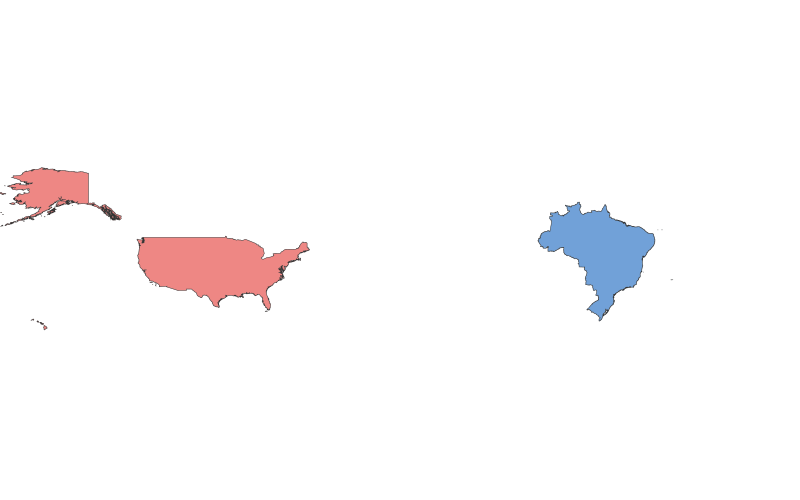United States vs. Brazil: A Geographical Comparison

Comparison Table
| Category | United States | Brazil |
|---|---|---|
| Location | North America, bordered by Canada and Mexico | South America, bordered by 10 countries including Argentina and Colombia |
| Size | 9.8 million km² (3rd largest) | 8.5 million km² (5th largest) |
| Climate | Diverse: Arctic (Alaska), temperate, subtropical, arid (Southwest) | Tropical (Amazon), subtropical, semi-arid (Northeast) |
| Natural Resources | Coal, oil, natural gas, timber, minerals | Iron ore, bauxite, gold, timber, hydropower |
| Urban Development | Highly urbanized (82% urban), major cities: NYC, LA, Chicago | Moderately urbanized (87% urban), major cities: São Paulo, Rio de Janeiro |
| Transportation | Extensive highway/rail networks, busy airports (Atlanta, LAX) | Limited rail; reliance on roads/airports (São Paulo, Rio) |
Description
United States
The United States is a federal republic with a rich history of colonization, independence (1776), and rapid expansion. Its diverse culture stems from immigration, blending Native American, European, African, and Asian influences. The economy is the world’s largest, driven by technology, finance, and manufacturing. Geographically, it features the Rocky Mountains, Great Plains, and Mississippi River. Major cities like New York and Los Angeles are global hubs.
Brazil
Brazil, the largest country in South America, gained independence from Portugal in 1822. Its culture is a vibrant mix of Indigenous, African, and Portuguese traditions, famous for Carnival and samba. The economy relies on agriculture (soy, coffee), mining, and energy (hydropower). The Amazon Rainforest, covering 60% of its territory, is a critical ecological resource. Urban centers like São Paulo are economic powerhouses, though inequality persists.
Both nations share vast territories and natural wealth but differ in climate, development patterns, and cultural heritage.